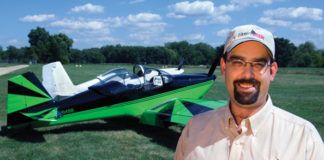
We’re pretty deep into the operating limitations for our Experimental aircraft. So what about required inspections? (22) No person may operate this aircraft unless within the preceding 12 calendar months it has had a condition inspection performed in accordance with the scope and detail of appendix D to part 43, or other FAA-approved programs, and was found to be in a condition for safe operation. As part of the condition inspection, cockpit instruments must be appropriately marked and needed placards installed in accordance with 91.9. In addition, system-essential controls must be in good condition, securely mounted, clearly marked, and provide for ease of operation. This inspection will be recorded in the aircraft logbook and maintenance records.
Sounds a lot like an “annual inspection” doesn’t it? So why isn’t it called an annual?
Well, for one thing the sign off for an annual states that “the aircraft was found to be in an airworthy condition.” Can our Experimental aircraft be “in an airworthy condition?” To do so, an aircraft must meet its Type Certificate. Do we have a Type Certificate for our aircraft? I don’t think so. If we did, it wouldn’t be Experimental. We can only find our aircraft “to be in a condition for safe operation.”
Notice also that any of those placards that you installed to pass your initial airworthiness inspection must be replaced if they have fallen off.
(23) Condition inspections must be recorded in the aircraft logbook and maintenance records showing the following, or a similarly worded statement. “I certify that this aircraft has been inspected on [insert date] in accordance with the scope and detail of appendix D to part 43, and was found to be in a condition for safe operation.” The entry will include the aircraft’s total time-in-service (cycles if appropriate), and the name, signature, certificate number, and type of certificate held by the person performing the inspection.
Paragraph 23 tells us how to sign off the condition inspection and also what information about the inspector must be included.
The next two paragraphs, limitations 24 and 25 will be issued in lieu of limitations 22 and 23 for turbine-powered amateur-built aircraft.
(24) This aircraft must not be operated unless it is inspected and maintained in accordance with an inspection program selected, established, identified and used as set forth in 91.409(e) through (h). This inspection must be recorded in the aircraft logbook and maintenance records.
We see that turbine aircraft are treated a little differently and require a specific inspection program, which is typically provided by the engine manufacturer or an airframe manufacturer who uses the engine. This inspection program must be approved by the local FSDO.
(25) Inspections must be recorded in the aircraft logbook and maintenance records showing the following, or a similarly worded statement. “I certify that this aircraft has been inspected on [insert date] in accordance with the scope and detail of the [program title] FSDO-approved program dated [insert date], and found to be in a condition for safe operation.” The entry will include the aircraft’s total time-in-service (cycles if apt) and the name, signature, certificate number and type of certificate held by the person performing the inspection.
Paragraph 25 contains the same basic information as 23, except it changes the wording to fit the specific inspection.
Next time we’ll finish up with who can perform and revise these inspections, and when you must advise ATC of your Experimental status.
Please send your questions for DAR Asberry to [email protected] with Ask the DAR in the subject line.

![]()
Mel Asberry is an experienced Designated Airworthiness Representative specializing in Experimental/Amateur-Built aircraft. He and his wife, Ann, have built seven amateur-built airplanes including two ultralight types, a Moni Motorglider, a Dragonfly Mk2, two RV-6s and a Zenair CH 601HDS. They are currently building a scratch-built biplane.










